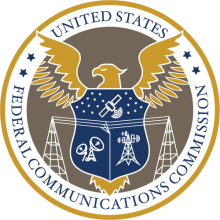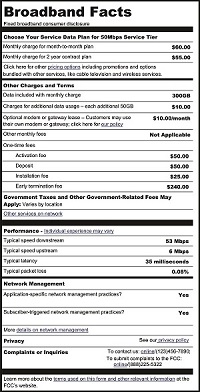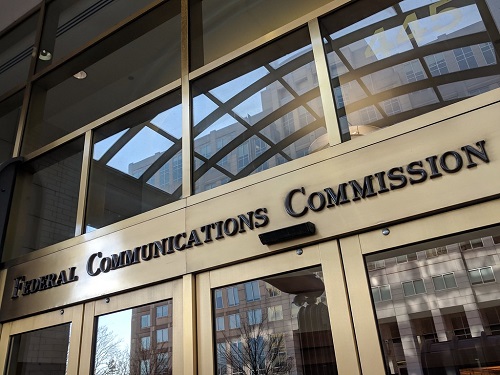
Fast, affordable Internet access for all.

In November 2021, Congress passed the Infrastructure Investment and Jobs Act (IIJA) which, in addition to funding the single largest federal investment in broadband infrastructure expansion, also mandated the implementation of a broadband nutrition label.
Similar to the nutrition label on the back of packaged food in grocery stores, the broadband label requires the transparent disclosure of broadband pricing and service information to help customers make informed decisions about service.
In November of 2022, the FCC issued a Notice of Proposed Rulemaking detailing how the label will be implemented. Industry and consumer advocates alike submitted nearly 250 filings during the public comment period, which ended in March 2023.
Most recently, the FCC released an Order of Reconsideration in response to three petitions it received from coalitions pushing back on or clarifying the rules outlined in the proposed rulemaking.
FCC Says 'Up To' Amounts Not Transparent Enough
The first petition was submitted by a broad swath of trade groups – including ACA Connects, America’s Communications Association; NTCA, The Rural Broadband Association; NCTA, The Internet & Television Association; The Cellular Telephone Industries Association; and USTelecom, The Broadband Association – and specifically pushed back on the FCC’s proposed requirement that ISPs disclose every one of their fees on the label, as well as requesting permission to list “up to” amounts for fees, citing the amount of administrative work it would take to comply with the requirement.

The FCC rejected this attempt to skirt itemizing fees, writing that “consumers should know both the total cost of service and what goes into that cost to both budget and comparison shop between plans and providers.” The order noted that ISPs should only list fees that are applicable to a customer at their particular geographic location, and reminded them that if they fold their fees into a published base price, they can simply tell customers that fees are included without outlining what those fees are.
The coalition also took issue with a requirement that mandated that ISPs document each time the label is presented to customers over the phone, at a physical retail location, or through some other sales channel that is not online.
The FCC did loosen requirements around this documentation requirement, specifying that ISPs could meet it by keeping records of the ways they train employees to use the label when interacting with customers.
Slight Adjustments But Broader Goals Remain
The second petition was filed by a coalition of E-Rate and RHC Universal Fund Service users requesting that the broadband label not be required for those offered negotiated, custom broadband services under either of these programs. The FCC clarified that the label is only required for those offering “mass-market” broadband services.
The third petition, submitted by CTIA on behalf of the wireless broadband industry, urged the FCC to loosen its requirements around the format wireless carriers use to disclose government taxes and data allowances.
The FCC rejected this request in an effort to preserve the simplicity and clarity of the broadband label, directing providers to leave lengthy descriptions off the label itself, and to include more comprehensive explanations within other customer-facing materials.

In regard to data allowances, providers were told to indicate the “amount of data included with the monthly price in the label template,” “any charges or reductions in service for any data used in excess of the amount included in the plan,” and the increment used to calculate overage fees (“additional charges apply for each additional 50GB,” for example).
The petitions will result in slight adjustments to the proposed rule, but in general, the FCC’s rejection of the complaints largely upholds transparency and customer protections – the broader goals which triggered the creation of the label in the first place.
While the FCC largely rejected the complaints filed by the coalitions to water-down the label requirements, there are still some ways the label falls short of what many public interest groups think is ideal, such as consumer advocates’ call for the label to be displayed on monthly bills as an ongoing transparency mechanism to hold providers accountable to the service they advertise. Instead, ISPs only have to display the label at the point of sale.
Additionally, the implementation of the label would have been an excellent opportunity to facilitate data collection, but because ISPs are not required to also submit their labels to a centralized database, the label falls short of its potential in this area. Currently, there is no good source of information about broadband pricing and speed, and a centralized database would have made it much easier to aggregate pricing data and guide policy towards addressing inequities.
Once the slightly-amended proposed rule is reviewed by the Office of Management and Budget, providers with less than 100,000 customers will have one year to comply with the label requirements, and all other providers will have six months. While it’s promising that the broadband label will help Internet service subscribers make decisions and better understand pricing, actual enforcement of the label rules will be critical in keeping providers accountable and ensuring the label carries out its intended purpose.
Inline image of FCC front entrance courtesy of Flickr user Rob Pegoraro, Attribution-NonCommercial-ShareAlike 2.0 Generic (CC BY-NC-SA 2.0)
